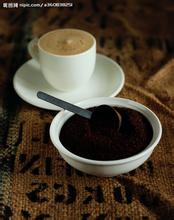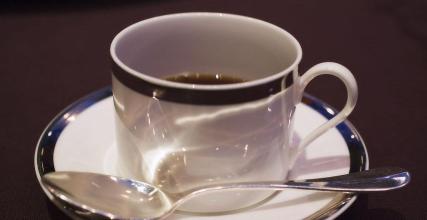Description of Flavor of Water-washed Coffee and Solar Coffee Honey Flavor description of Grinding Calibration area varieties
Description of Flavor of Water-washed Coffee and Solar Coffee Honey
technological process
Harvest → sun field (sunlight exposure) → sheller (remove pulp, etc.) → grading (electronic bean selector or hand selection, screen, etc.) → export
Advantages: drying method can best retain the original flavor of coffee beans, sun-dried coffee beans have a strong flavor of both soil (Muddy).
Disadvantages: easily affected by climate, easily mixed with defective beans and other impurities, and takes a long time, about 2 weeks.
Washing method
The technology invented by the Dutch in the 18th century AD: first, add a lot of water to the collected fruit to wash away the impurities, and the ripe fruit in the water will sink, while the unripe and overripe fruit will float up and can be selected and removed. Then use a peel and pulp to remove the peel and pulp, then ferment for 18-36 hours, use fermentation bacteria to dissolve the pectin that is originally insoluble in water, and then put the mellow beans into the pool. Go back and forth, use the friction of beans and the power of running water to wash the coffee beans until smooth and clean, then dry them to 9% of the water content, and finally use a sheller to remove the silver film. The coffee beans prepared by washing method currently account for about 70% of the total coffee beans in the world. The coffee treated by washing method has good glossy taste, less impurities but strong sour taste. Water washing is the most popular treatment method at present, and most high-quality coffee beans will choose water washing method.
Natural sunlight can retain the fruity aroma of coffee fruit. When you taste this kind of coffee, you will find that the coffee has a fruity aroma and a brighter taste. After drying, people will use special machines to remove the shell of the surface layer. This process is called drying and shelling (Dry Milling).
We know that the treatment of raw coffee beans can be roughly divided into three types. The distinction between each method is based on the fact that several layers of matter are removed from the fruit before the coffee is dried. The following is a list of the three major processing methods:
11. Natural sun treatment: retain all substances 22. Honey treatment: remove the peel and pulp and retain some or all of the mucous membrane (honey)
(3) washing method: the peel, pulp and mucous membrane were removed by washing and fermentation. This method is also known as the complete washing method (Fully Washed). Shampoo is the most common way for most coffee-producing countries in the world to handle Arabica coffee beans. Some areas also use advanced high-pressure washing machines to clean the peel, pulp and mucous membrane of coffee beans, so fermentation is no longer needed. This method of using a high-pressure washing machine to treat coffee beans is called "natural washing (Pulped Natural)".

Important Notice :
前街咖啡 FrontStreet Coffee has moved to new addredd:
FrontStreet Coffee Address: 315,Donghua East Road,GuangZhou
Tel:020 38364473
- Prev

Pakamara Green Coffee Bean Sample Flavor Description Taste Grind Scale Region Introduction
Pacamara Green Coffee Bean Sample Flavor Description Taste Grind Scale Production Area Description Coffee production in El Salvador In its heyday, it was the fourth largest coffee producer in the world, but decades of civil war almost brought down the coffee industry. Fortunately, the war stopped in recent years and the coffee industry recovered. The only benefit of the civil war for the Salvadoran nation was that the peasants left their fields to waste and failed to catch up with the last two decades.
- Next

How long can the half-cooked coffee beans last after grinding? how to drink the coffee beans after they are ground into powder
How long will the half-cooked coffee beans last after grinding? boiling will make the coffee bitter, so do not boil the coffee. The appropriate brewing degree should be slightly less than 96 ℃. 2. Coffee can no longer be heated. When brewing, you should pay attention to only the amount you need to cook each time, and it is best to drink it when it is just cooked. 3. The best drinking temperature of coffee is 85 ℃. 4. Water is in a cup of coffee
Related
- Guji coffee producing area of Guji, Ethiopia: Humbela, Shakiso, Wulaga
- What is the most expensive variety of Qiloso in BOP multi-variety group?
- How to store the coffee beans bought home?
- Why are Yemeni coffee beans so rare now?
- Ethiopian Sidamo all Red Fruit Sun Sun Santa Vini Coffee beans
- SOE is mostly sour? What does it mean? Is it a single bean? what's the difference between it and Italian blending?
- Is Italian coffee beans suitable for making hand-brewed coffee?
- How to choose coffee beans when making cold coffee? What kind of coffee beans are suitable for making cold coffee?
- Just entered the pit to make coffee, what kind of coffee beans should be chosen?
- Can only Japan buy real Blue Mountain Coffee? What are authentic Jamaican Blue Mountain coffee beans?

